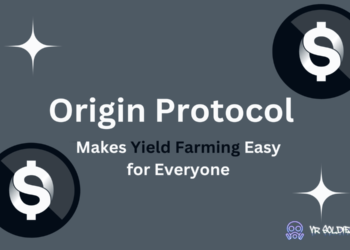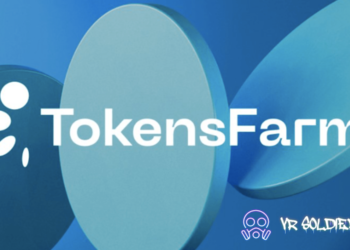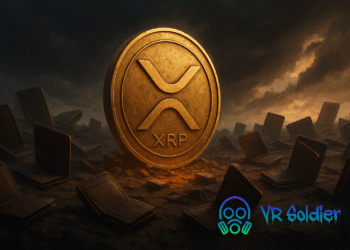The Curve protocol embarked on its journey towards decentralized governance by launching a decentralized autonomous organization (DAO) to oversee protocol changes. Most DAOs are governed by governance tokens that confer voting rights to token holders. In this instance, the Curve DAO is governed by the CRV token, but first what’s Curve, and is it a trusted platform for yield farming?
What Is Curve?
Curve operates as an AMM platform sharing similarities with Uniswap and Balancer but distinguishes itself by exclusively accommodating liquidity pools composed of similarly behaving assets like stablecoins, or wrapped versions of such assets such as wBTC and tBTC. This approach enables Curve to utilize more efficient algorithms, showcasing the lowest levels of fees, slippage, and impermanent loss among decentralized exchanges (DEXs) on Ethereum.
Let’s commence with a swift refresher on how AMMs function and then we can delve into how Curve achieves reduced risk and heightened efficiency compared to other AMMs in the DeFi ecosystem.
How Automatic Market Makers Work in Curve?
Automated market makers facilitate the permissionless and automated trading of digital assets by utilizing liquidity pools instead of direct trading between buyers and sellers. Essentially, a liquidity pool represents a communal pool of tokens. Users contribute tokens to liquidity pools, and the token prices within the pool are determined by a mathematical algorithm. By adjusting the algorithm, liquidity pools can be optimized for various purposes. Any individual with internet access and some ERC-20 tokens can become a liquidity provider by contributing tokens to an AMM’s liquidity pool. Liquidity providers typically earn a fee (paid by traders interacting with the liquidity pool) for supplying tokens to the pool.
Stable Liquidity Pools
Curve was introduced in 2020 with the aim of establishing an AMM exchange with nominal fees for traders while offering an efficient fiat savings account for liquidity providers. By concentrating on stablecoins, the platform enables investors to sidestep more volatile crypto assets while still earning substantial interest rates from lending protocols. Compared to other AMM platforms, the Curve model adopts a notably conservative approach by steering clear of volatility and speculation in favor of stability.
On AMMs like Curve, liquidity pools consistently endeavor to “buy low” and “sell high.” Here’s a refresher on how this rebalancing works, this time featuring USD-pegged stablecoins USD Coin (USDC) and DAI.
If you were vending DAI on Curve, you would initiate this sequence of actions:
- Additional DAI is injected into the pool.
- It becomes unbalanced as there is now an excess of DAI compared to USDC.
- The pool offloads DAI at a slight discount relative to USDC to incentivize balance.
- It readjusts its DAI to USDC ratio.
By selling DAI at a discount, the pool endeavors to restore its original state. As assets in the it’s pool are stable relative to each other in price, trading between them incurs minimal volatility compared to other AMM liquidity pools. In AMMs like Uniswap or Balancer, where liquidity pools can consist of any token, volatility is substantial. By limiting the pools and the types of assets in each pool, Curve mitigates impermanent loss, an AMM phenomenon where liquidity providers incur a loss in token value relative to the market value of that token due to volatility in a liquidity pool.
Note: impermanent loss is not always detrimental. Volatility and slippage present opportunities for users aiming to profit from entering and exiting a liquidity pool at the right time. By forgoing the high risk — and occasionally high reward — aspect of volatility, Curve instead attracts liquidity providers using what’s known as DeFi composability. This means you can utilize your investments on the Curve platform to earn rewards elsewhere in the DeFi ecosystem.
Yield Farming CRV Tokens

The CRV token can be purchased or earned through yield farming — when you deposit assets into a liquidity pool and receive tokens as a reward. By providing DAI to a designated Curve liquidity pool, you earn the CRV token in addition to fees and interest. Yield farming the CRV token amplifies the incentives for becoming a Curve liquidity provider, as you not only acquire a financial asset but also ownership of a robust DeFi protocol.
Composability and Yield Farming
On an AMM exchange like Uniswap, you can earn fees whenever a trade occurs. On Curve, trading fees are lower than those on Uniswap, but you can also earn rewards from external tokens thanks to interoperability.
For instance: When DAI is lent out on the Compound platform, it is exchanged for a liquidity token called cDAI, which automatically accrues interest for the holder. Holding cDAI entitles you to withdraw DAI from Compound along with interest. Curve users can employ cDAI in its liquidity pools, thus gaining a secondary layer of utility and potential earnings from the same investment.
The capability to utilize Compound’s cTokens on Curve illustrates the benefits of composability in the DeFi ecosystem. Compound is merely one instance of an external DeFi protocol with which the platform integrates. The protocol also integrates with Yearn Finance and Synthetix to maximize incentives for liquidity providers.
In Conclusion
Curve stands as one of the most favored platforms in DeFi due to its preference for stability and composability over volatility and speculation. Its composable aspects render it an interconnected nucleus of the DeFi ecosystem, and with the CRV token serving as a governance mechanism, it represents an exceptionally decentralized organization owned by its users, where they can earn passive income through multiple ways including yield farming.












